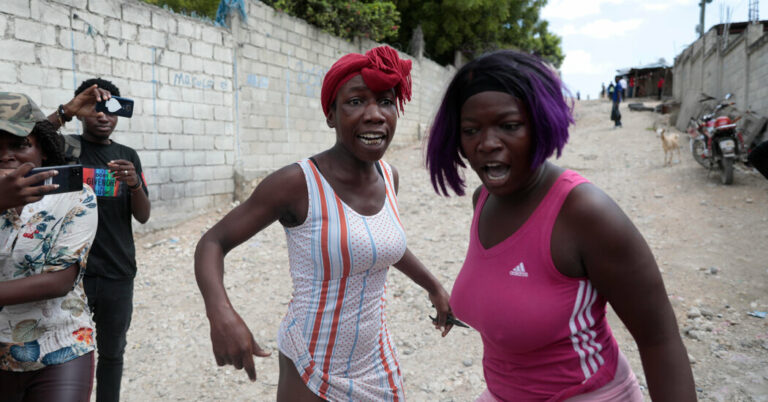Unraveling Chaos: Gunfire and Unrest Grip Port-au-Prince
The Savage Dance of Power and Mayhem
In the heart of Haiti’s teeming capital, Port-au-Prince, a deadly tango unfolds. A gang thirsty for control ignites a storm of bullets, targeting a gathering of protesters led by an unexpected figure – a church leader. The aftermath is a grim tableau, with at least seven souls claimed by the unforgiving fire. Human rights watchdogs murmur about the whirlwind of violence that spirals ever higher. Welcome to a city where chaos isn’t just a guest; it’s the unruly master of the house.
“This ain’t just a shooting; this is the state floundering in its duty to shield its own,” muses Gédéon Jean, the maestro behind the Center for Analysis and Research in Human Rights (CARDH), a group that dances independently in the Haitian arena and strums strings for the United Nations. He paints a gloomy picture, hinting that the tally of the fallen might yet grow. The crowd, a sea of humanity, surged and some even brandished machetes.
In the wake of President Jovenel Moïse’s 2021 assassination, Haiti veered into an abyss. An already rocky ship hit the iceberg and power vacuum spread like wildfire. Into this mess stepped gangs – not the kind to pass out flyers for bake sales, mind you. Random killing, sexual violence, and even kidnapping became their peculiar form of governance. And as if on cue, the citizens threw their hat into the ring with a “self-defense” coalition that wrote its creed in blood – the blood of those they labeled as gangsters.
Now, the curtain rises in Canaan, a scrappy community on Port-au-Prince’s fringes. It’s a place born from the ashes of a past earthquake, a phoenix that rose from a disaster’s debris. Here, Pastor Marco orchestrated a symphony of protest against the “5 Seconds” gang that holds Canaan captive. Pastor Marco, a name that rings like a call to action, but in this twisted saga, it’s a call to arms, to machetes and sticks, and to the battle cry of the desperate.
No one knows where the police’s voice got lost, but when the gunpowder fog cleared, and the echoes of fear still bounced, the spokes remained silent. Marie Yolène Gilles, the torchbearer of the Open Eyes Foundation, points to Pastor Marco, or Marcorel Zidor, as the puppeteer behind the pulpit. She hints at a “violent rhetoric,” and she’s not talking about punchlines that slap but more like daggers that draw blood.
While the paint of security peels off Port-au-Prince’s walls, the U.S. Embassy hollers for a ceasefire – nonemergency government personnel are packing bags. Aid groups, backed by the International Rescue Committee, waved the white flag and paused their operations, waving off the danger.
And then, in strolls Kenya, like a gunslinger from another land. They’re peddling a plan, a thousand Kenyan police officers for Haiti, fresh off the boat. The Bahamas join the party, with a promise of 150 tough cookies to back up the show. The United States gets chatty, whispering about a U.N. Security Council resolution. It’s like a diplomatic carnival, but doubts linger, a fog thicker than the gun smoke of past firefights.
Remember cholera? Yeah, that 2010 earthquake’s aftertaste, courtesy of U.N. peacekeepers and sewage. Now the Kenyan cavalry’s under scrutiny, skeletons in their closet named human rights violations. Whispers haunt the night that Kenyan boots might just tread airports and highways, leaving the rest to fend for themselves.
As the sun dips on the horizon, the United Nations paints a somber picture of Haiti. The stage isn’t just set; it’s a canvas splattered with despair. Municipal representatives are slaughtered, families turned to ash in their own homes. Over 350 souls claimed in a deadly dance; gangsters, innocents, and even a cop found themselves on the dancefloor of doom. Over 5,000 folks took a train out of Gangland Central this month alone, leaving chaos in the rearview.
Simon Romero whispers his tales from Mexico City, while Andre Paulte spins his yarns from the heart of the chaos in Port-au-Prince, Haiti.

